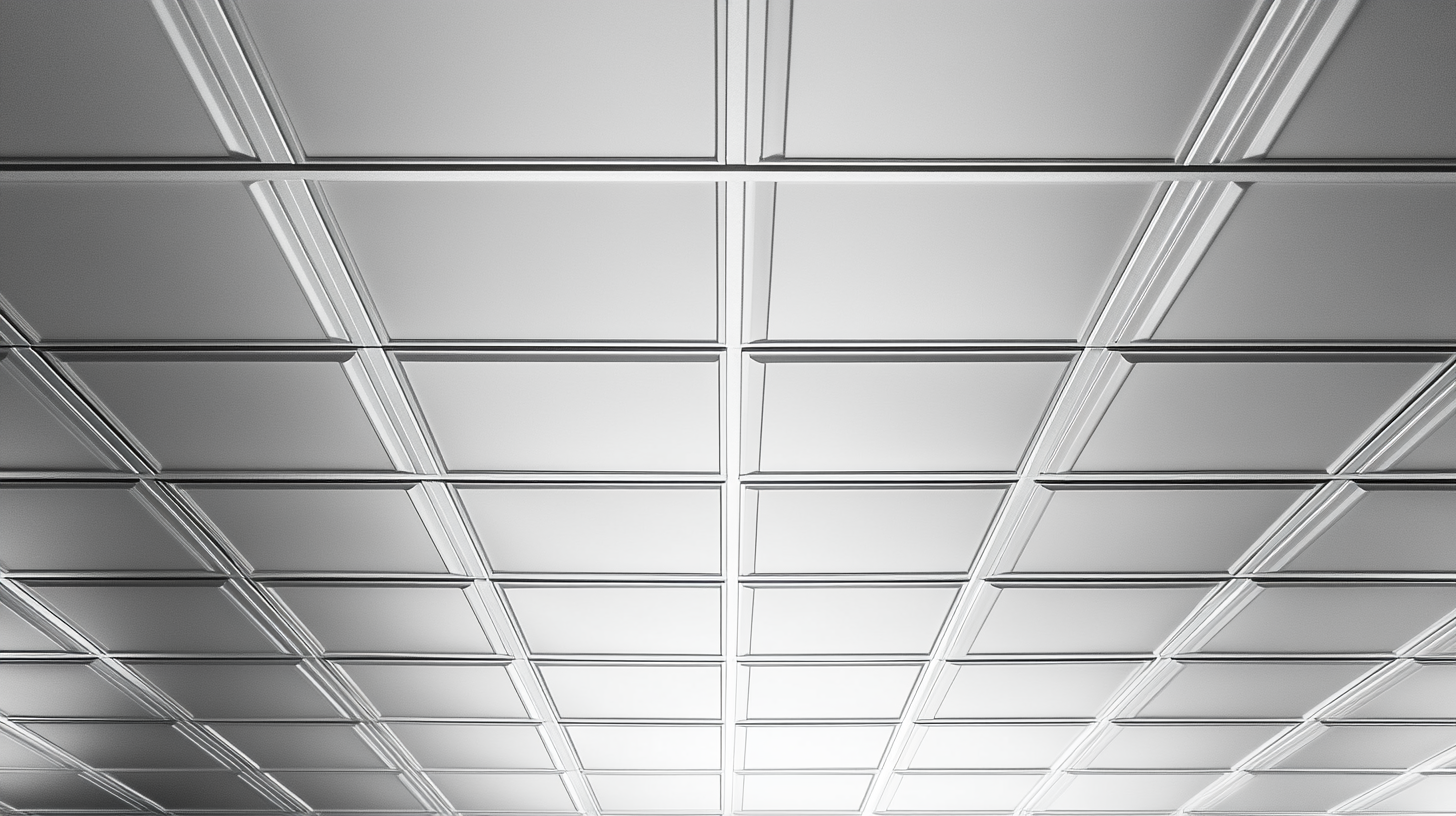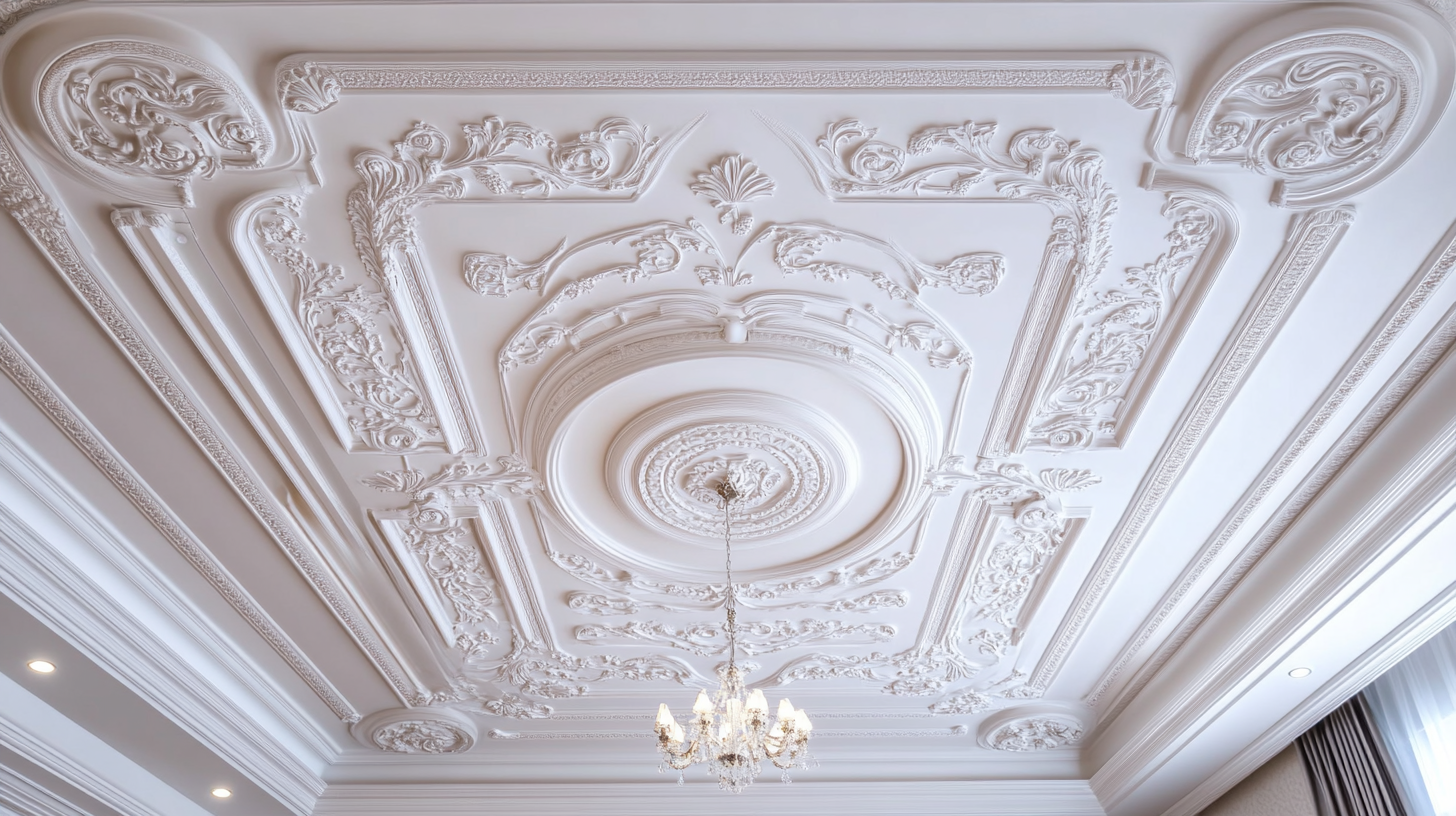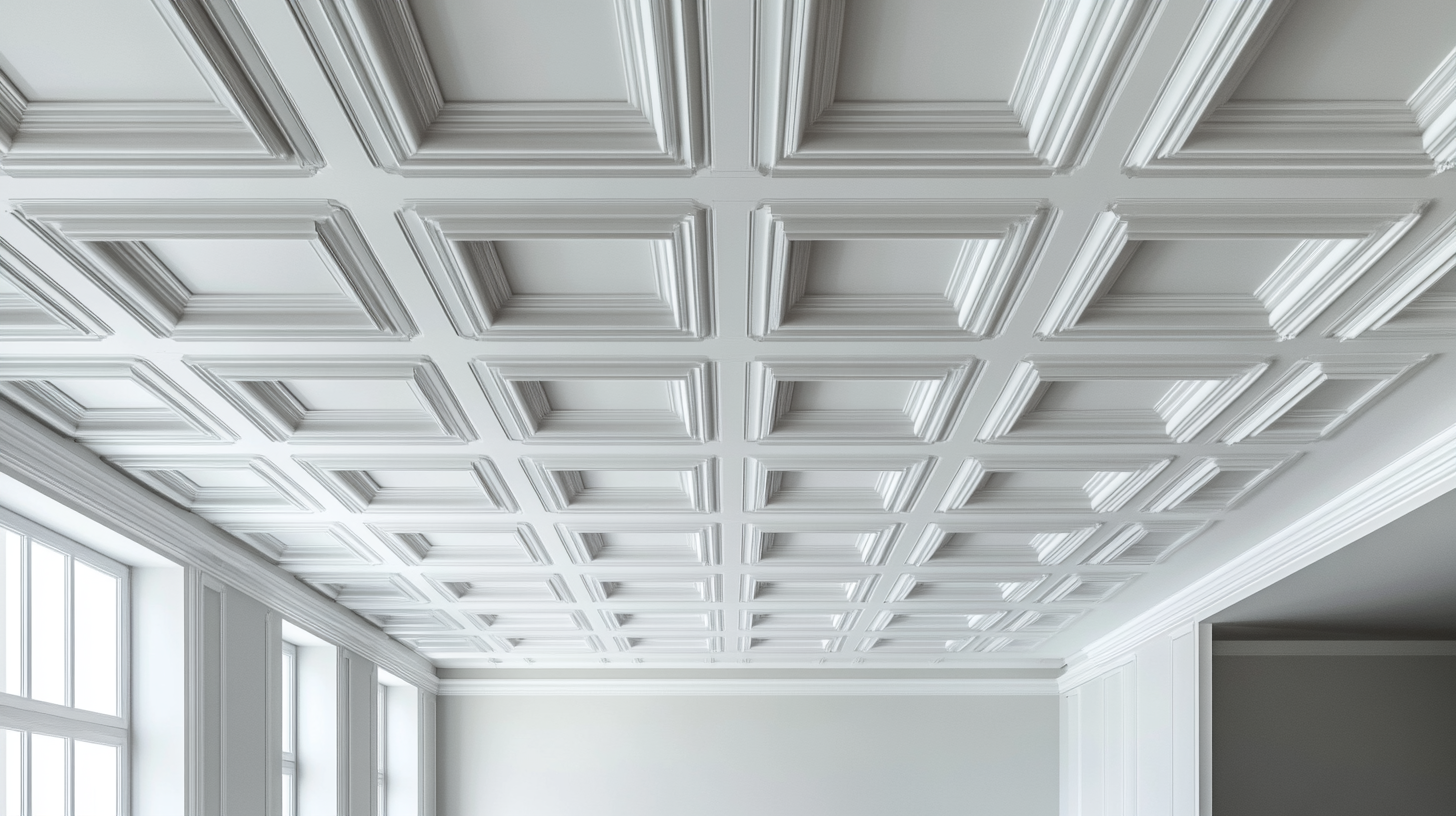The construction industry is undergoing a transformative phase as it seeks cost-effective and sustainable solutions to meet the increasing global demand for innovative building materials. Among the myriad options available, PVC ceiling panels have emerged as a formidable choice for architects and builders alike. According to a report by Research and Markets, the global PVC ceiling market is projected to reach approximately $9.3 billion by 2025, expanding at a CAGR of 8.1%. This growth underscores the rising popularity of PVC ceiling panels, which are not only aesthetically pleasing but also offer remarkable durability and resistance to moisture, making them ideal for various applications, from residential to commercial spaces.
Furthermore, the growing emphasis on eco-friendly construction practices aligns with the advantages of PVC materials, as they can be recycled and have a lower carbon footprint compared to traditional materials. A study from Allied Market Research highlights that the increasing preference for lightweight and affordable building materials is driving a paradigm shift in construction approaches. With such promising projections and a shift towards sustainable building practices, unlocking the potential of PVC ceiling panels could revolutionize the way we think about global construction solutions, providing an appealing option for developers and homeowners striving for efficiency without compromising quality.

The rise of PVC ceiling panels in modern construction can be attributed to their numerous advantages that cater to the evolving needs of builders and homeowners alike. As the construction industry seeks innovative solutions that prioritize both functionality and aesthetics, PVC panels have emerged as a popular choice. These lightweight panels offer remarkable durability and resistance to moisture, making them ideal for diverse environments, including high-humidity areas like kitchens and bathrooms. Beyond their practical benefits, PVC ceiling panels come in a variety of designs and finishes, allowing architects and designers to create visually stunning spaces without compromising on quality. The versatility of these panels enables them to fit seamlessly into both contemporary and traditional design schemes. Additionally, their ease of installation significantly reduces labor costs and construction time, making them an effective solution for projects adhering to tight schedules. Moreover, the favorable cost-effectiveness of PVC ceiling panels positions them as an attractive option for global construction projects. As more builders globally recognize the potential of PVC materials, the demand for these panels continues to grow, driving innovation and sustainability within the industry. This trend not only addresses the need for cost reduction but also aligns with the increasing focus on eco-friendly construction practices, creating a win-win scenario for stakeholders at all levels.

The construction industry is increasingly seeking cost-effective materials that also offer high performance. This is where PVC ceiling panels come into play, providing several advantages over traditional ceiling materials such as asbestos and plaster. A comparative cost analysis reveals that PVC not only reduces initial installation costs but also offers considerable savings in maintenance and durability over time.
Thermal properties are a key factor when evaluating ceiling materials. Studies have shown that while asbestos was once favored for its thermal insulation characteristics, PVC ceiling panels now demonstrate comparable thermal efficiency without the associated health risks. This makes PVC a safer option for both builders and occupants, ensuring comfortable indoor climates without compromising on cost-effectiveness.
Additionally, the lightweight nature of PVC allows for easier handling and installation, leading to reduced labor costs on construction projects. This flexibility in application and the potential for quicker project timelines further enhance its appeal in global construction solutions. As the industry continues to evolve, incorporating more sustainable and economical materials like PVC will be crucial in meeting the demands of modern architecture and engineering.

PVC ceiling panels are revolutionizing the construction industry, particularly through their eco-friendly benefits. As the world leans towards sustainable practices, these panels emerge as a cost-effective solution that doesn’t compromise on quality. The material's lightweight nature reduces transportation emissions, making it a greener choice for construction projects globally. Moreover, the manufacturing process of PVC panels has seen significant improvements, ensuring that they can be produced using less energy and fewer resources compared to traditional materials.
Durability is another key aspect of PVC panels that contributes to their sustainability. Unlike wood or plaster, which may require frequent replacements and repairs, PVC panels boast a remarkable lifespan that minimizes waste. They are resistant to moisture, termites, and corrosion, making them suitable for various climates and environments. This long-lasting quality not only reduces the need for extensive maintenance but also ensures that fewer resources are consumed over time, aligning with a sustainable construction model.
Additionally, the versatility of PVC panels allows them to be used in a wide array of applications, from residential to commercial spaces. Their aesthetic appeal can mimic the look of natural materials, enhancing interior designs without the associated environmental cost. This combination of sustainability and durability positions PVC ceiling panels as a forward-thinking solution for those seeking to build responsibly in today’s eco-conscious market.

The construction industry is continually seeking ways to enhance efficiency while maintaining cost-effectiveness, and PVC ceiling panels have emerged as an innovative solution. Research by the Global Industry Analysts suggests that the demand for PVC panels is projected to reach 2 million metric tons by 2027, highlighting their growing acceptance in construction practices. This surge is attributed to their lightweight nature, which significantly reduces installation time and labor costs. In fact, projects utilizing PVC solutions can see installation efficiencies improved by up to 30%, allowing contractors to allocate resources more effectively.
PVC ceiling panels are not only easy to install but also versatile, catering to various design aesthetics. Their interlocking system minimizes the need for specialized tools and cuts down on wastage, making them an environmentally friendly alternative. According to a report by MarketsandMarkets, the global PVC ceiling panels market is expected to grow at a CAGR of 6.3% from 2022 to 2027. This robust growth reflects the industry's shift towards materials that enhance productivity while meeting sustainability goals.
Moreover, the durability and low maintenance of PVC ceiling panels further contribute to their appeal in global construction solutions. With resistance to moisture and mold, these panels reduce maintenance costs and prolong the lifespan of installations. As construction projects strive to balance quality, speed, and affordability, adopting PVC solutions represents a forward-thinking approach that aligns with modern architectural needs and client expectations.
The global market for PVC ceiling panels is witnessing significant growth, driven by their cost-effectiveness and diverse applications across various sectors. Recent analyses indicate that PVC products, such as ceiling panels, are increasingly being adopted in both residential and commercial constructions. This trend aligns with the rising demand for sustainable building materials and innovative design solutions. According to industry reports, the global PVC ceiling panel market is projected to expand as more builders and architects recognize the advantages of these panels, which include durability, aesthetic versatility, and moisture resistance.
In parallel, the PVC rainwater gutter system market is also experiencing a notable increase, with forecasts suggesting a shift towards sustainable building practices. As cities strive for net-zero emissions by 2050, the integration of PVC gutter systems—available in both round and square designs—has become imperative. Reports highlight that these systems not only aid in efficient water management but also complement eco-friendly construction methods, making them a preferred choice among builders.
Furthermore, the antimicrobial plastic market is evolving as health-conscious consumers prioritize hygiene in both residential and commercial environments. The inclusion of antimicrobial properties in PVC products can enhance their appeal, ensuring that both ceiling panels and gutter systems meet modern safety standards. With designs aimed at promoting air quality and preventing mold growth, the adoption of PVC materials is set to increase, presenting a promising avenue for future construction projects worldwide.
